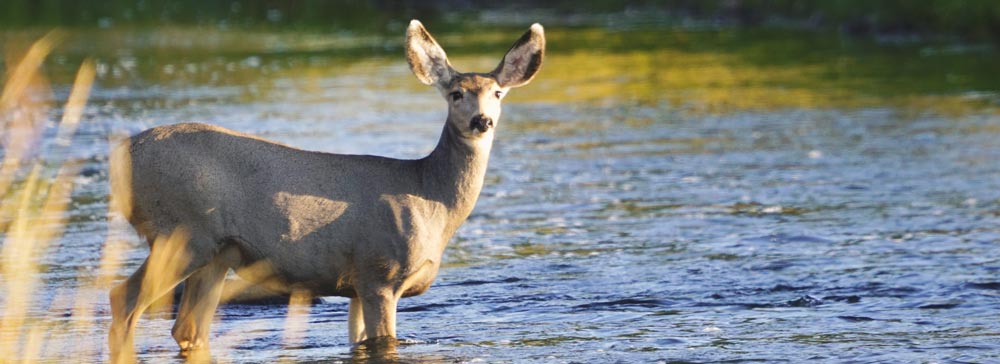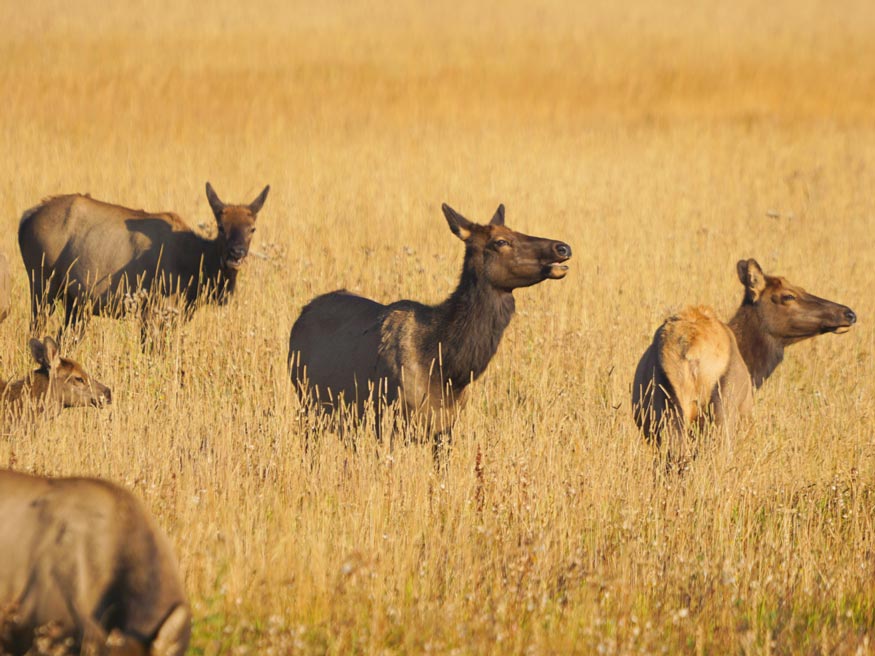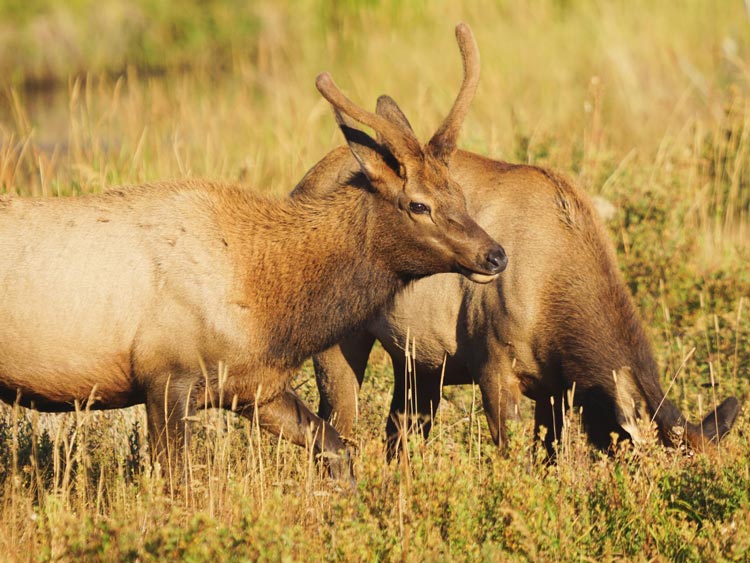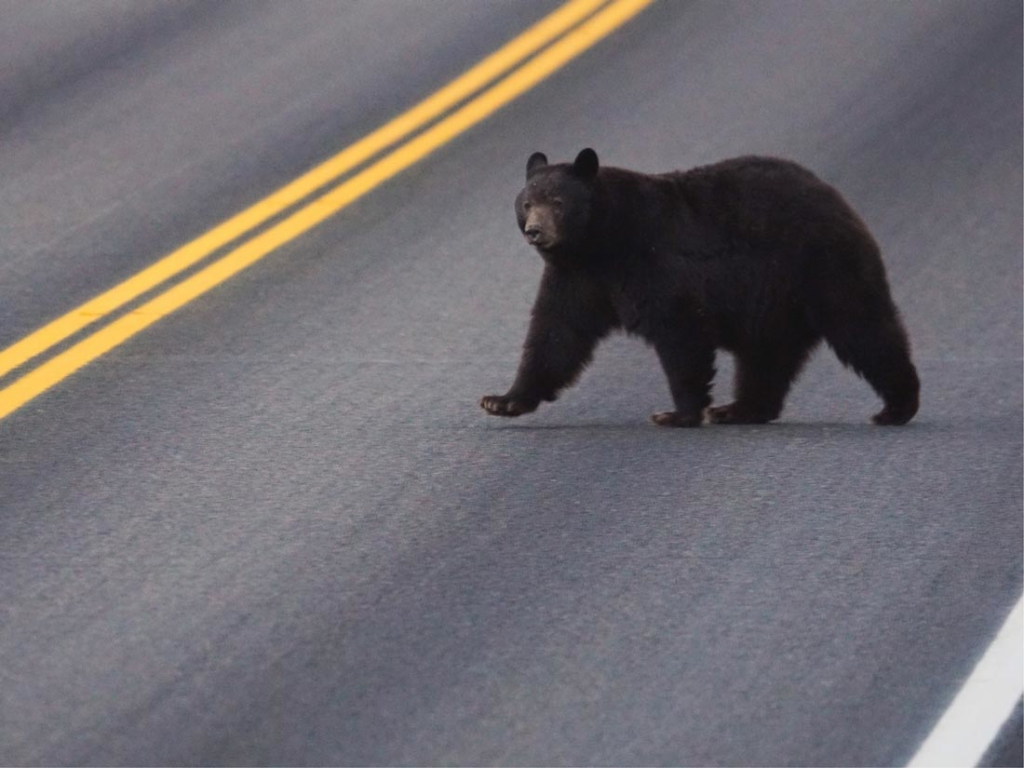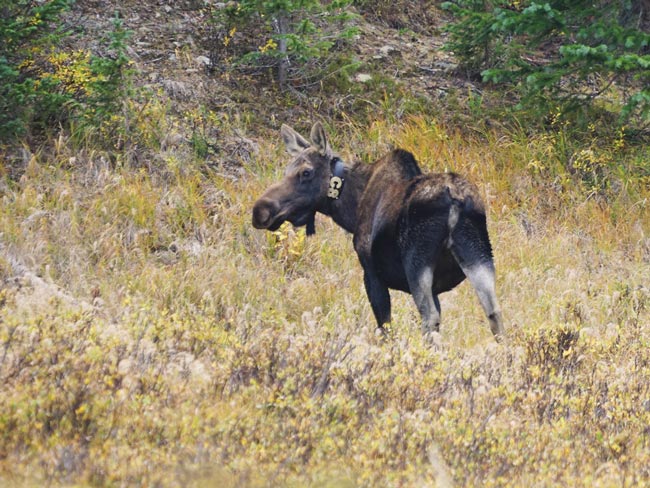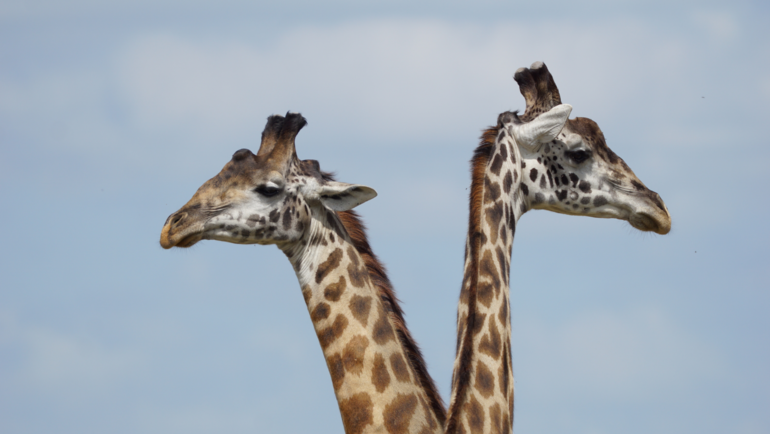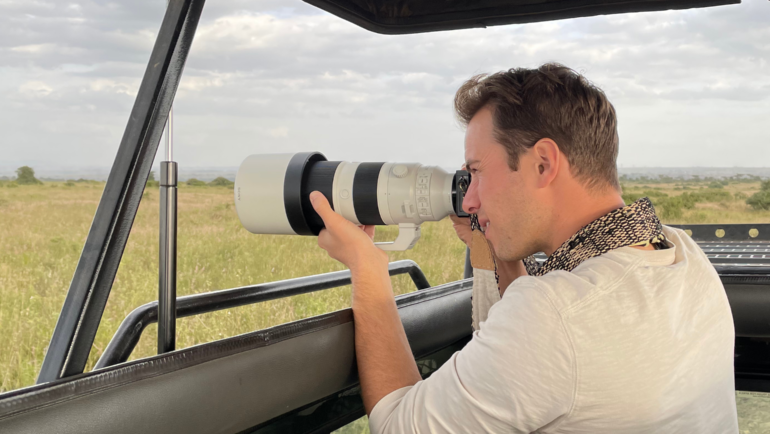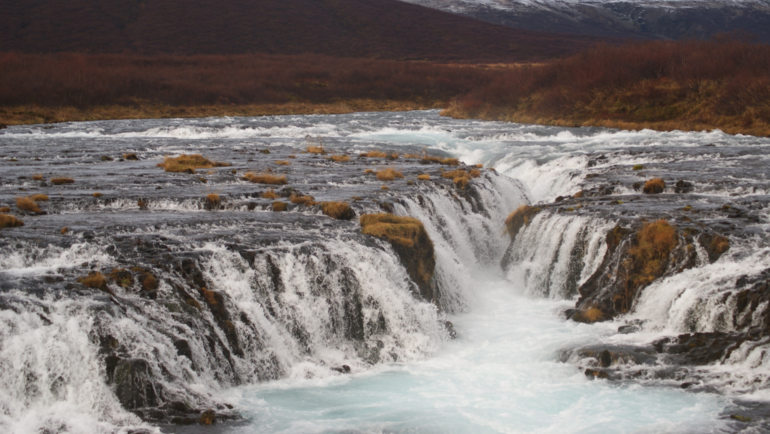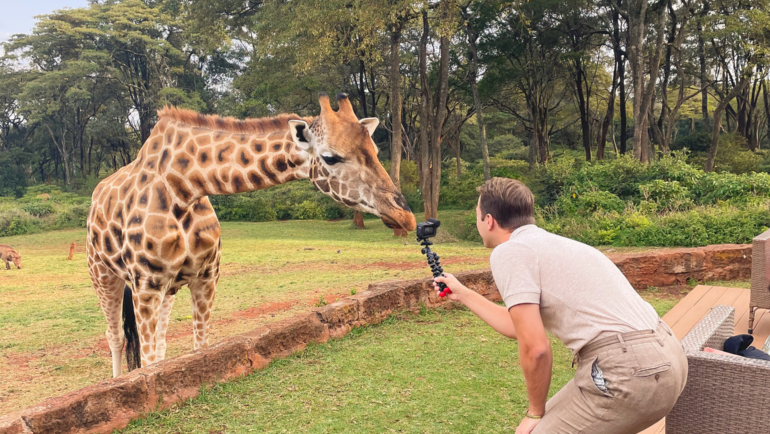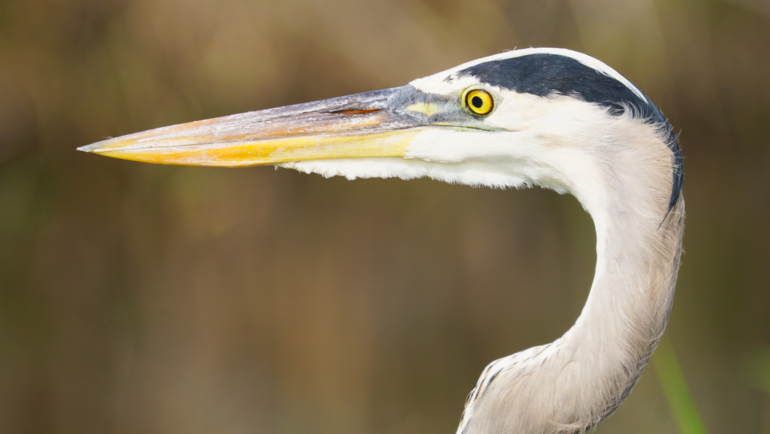The state of Colorado embodies so much of America’s wild west. From its eastern plains to the peaks of the Rockies, Colorado is a state where numerous species of wildlife are able to thrive. The state is dotted with national wildlife refuges, public lands, state parks, and even four national parks. Because of this, few other places in North America offer such accessible wildlife viewing opportunities. During my recent weeklong stay in Steamboat Springs, Colorado I was lucky enough to discover some of the most iconic animals of the Rocky Mountains. Let’s get to know some of Colorado’s most recognizable wildlife residents: marmot, elk, black bear, moose, prairie dog, pronghorn, and bald eagle.
Marmot – The Largest Squirrels of Colorado
Yellow-bellied marmots are a heavy-set relative of groundhogs that call the Rockies home. Many might call them frumpy or pesky, but I think they are the cutest! Regardless of what you feel about marmots, their size is quite recognizable. They are considered the largest ground squirrels of North America and weigh up to about 11 pounds. Marmots are most often found on rocky slopes and alpine meadows at high elevations. Even with numerous predators, marmots seem to rule their rocky homes as they retreat into their treacherous habitat. Their bulky figure makes them a relatively easy animal to observe on an alpine hike. While many resident marmots have become habituated to park visitors, be sure to give them plenty of space and respect. Keep your eyes peeled! If you’ve seen one marmot, you are likely to see more. They live in harem colonies, consisting of a group of females led by one dominant male. I know I could have certainly watched these stout mountain mammals all day long.
Best Places to See Marmot: I spotted a handful of marmots on the Lake Agnes Trail in State Forest State Park, another great location is Rocky Mountain National Park near the Alpine Visitor Center
Elk – The Icons of the Rocky Mountains
While not quite as large as their moose relatives, elk cause quite the massive stir in Colorado. Many consider them to be the state’s most sought-after animal for viewing. From the impressive number of photographers I saw all lined up at each elk sighting, I would have to agree. This is especially true from the middle of September through the middle of October, during their famed breeding season. I have been fortunate enough to see the elk rut of Smoky Mountain National Park in North Carolina and was fascinated by their behaviors. No matter the park or the state, if it’s elk rut then you can count on crowds flocking to catch a view of the action. Memories from my recent trip to Colorado still echo with elk bugling from Rocky Mountain National Park. You couldn’t beat watching the sunrise from the highest location in the park, right outside the Alpine Visitor Center, as a large herd of elk began their morning in the valley below. The steep incline perfectly amplified the bulls as they continuously bulged with their series of grunts, high-pitched squeals, and haunting shouts. Bulls make these noises to communicate with cows and other males to establish dominance and define territories.
Best Places to See Elk: My favorite places to spot elk were inside Rocky Mountain National Park near the Alpine Visitor Center and the meadows of Moraine Park.
Black Bear – Don’t Be Fooled By Their Name
As one of Colorado’s more difficult animals to see, any black bear sighting is a treat. But to clarify the name ‘black’ refers to their species, not the color of their fur. In fact, most black bears in Colorado are actually brown or cinnamon in color. These are merely different color phases of the same species. Their larger cousins, the grizzly bear, have been long extinct within the state. My black bear sighting occurred on an early morning drive, before sunrise when I caught the glimpse of an adult bear lumbering through a field headed towards the road. I quickly pulled over and positioned myself a safe distance from where I thought the bear would cross. My patience paid off, and I was treated to watching the bear venture across, of course ensuring there was no oncoming traffic. Even with approximately 12,000 black bears throughout the state, they are a rightfully secretive species. The best chances of seeing a bear in Colorado is around dawn or dusk, and in the fall as they are frantically foraging to prepare for the long winter ahead. If you do see a black bear, give them plenty of personal space. The National Parks Service recommends at least 150 feet (50 yards) between yourself and black bears. That’s equivalent to the length of about two school buses.
Best Places to See Black Bear: My sighting occurred just outside of Steamboat Springs, but bears are found throughout the state in stable numbers.
Moose – Colorado’s Massive Mammal
Moose were at the very top of my ‘hope to see in the wild’ list. With a robust population of moose, it’s hard to imagine that just two decades ago they were an almost impossible sight in Colorado. This now thriving population didn’t occur without some human assistance. In 1978, Colorado Parks and Wildlife relocated a dozen moose from Utah into the North Park region of the state, near Walden. At the time biologists thought moose might expand their range slowly southward and establish themselves in Colorado on their own. However, wildlife managers decided to give the species a boost and began transplanting moose into Colorado. After numerous other relocations, moose are now thriving on their own and have expanded their range further. Today, Colorado’s moose population is close to 3,000 individuals statewide.
Best Places to See Moose: I was able to spot four different moose, one foraging in the western side of Rocky Mountain National Park, and the other three were observed near the Moose-Goose Nature Trail in Arapaho National Wildlife Refuge near Walden, another popular place to see moose is in State Forest State Park.

Prairie Dogs – Town Builders of Colorado
While these little rodents might not be top on everyone’s bucket list, I absolutely love prairie dogs. Their social dynamics fascinate me, and I can only dream of being small enough to explore their underground towns. Colorado is home to an abundant population of prairie dogs, in fact, there are three different species. These natives of North America are considered a keystone species, which means that the ecosystem depends on them. Without prairie dogs, this grassland ecosystem would not be able to thrive. Their burrows are used as a shelter for other species like burrowing owls and swift foxes. And within the food web, prairie dogs are prey for species like the critically endangered black-footed ferret, badgers, coyotes, and birds of prey.
Best Places to See Prairie Dog: Full disclosure my first prairie dog sighting was in the rental car parking lot, so it’s safe to say around the Denver international airport you are bound to see at least a few towns of prairie dogs. I also had great luck seeing them near the Visitor Center at Arapaho National Wildlife Refuge in Walden, Colorado.

Pronghorn – Where the Antelope Roam
This gazelle-like species almost seems out of place in Colorado’s wild west. Pronghorn are in fact a native North American species, but their nick-name, antelope, can be deceiving. Unlike gazelles and antelope, pronghorn lose part of their horns each year, similar to the antlers of elk and moose. They are the only species in the world to shed a boney sheath from their horn root each year. This surefooted species has roamed the great plains for thousands of years. Considered the fastest land animal in the Western Hemisphere, pronghorn can run at speeds up to 55 miles per hour (89 km/h). They are only outpaced by cheetahs in short bursts. Fun fact, this adaptation of speed evolved to escape predation from the long-extinct American cheetah. Compared to their compact body size, pronghorn have large lungs, windpipes, and hearts to allow them to maintain that speed for long periods of time. They really are true athletes!
Best Places to See Pronghorn: My best pronghorn viewing was from Arapaho National Wildlife Refuge, but this species is thriving in Colorado and can be seen throughout much of the state’s open plains.

Bald Eagle – Colorado’s Unexpected Scavenger
Growing up in Minnesota bald eagles were a common sight, but certainly a sight I never took for granted. This species can proudly share their conservation success story, having once been on the brink of extinction. Now bald eagles have been delisted from the Endangered Species Act and are thriving throughout North America. In 2020 Colorado alone was home to over 200 occupied bald eagle nests. Protection has been key to this success story, but these eagles have adapted effortlessly to a changing environment. Most people won’t consider bald eagles scavengers, but their diet consists largely of carrion. In fact, I was able to observe a bald eagle feeding off a jackrabbit carcass on a roadway through Arapaho National Wildlife Refuge.
Best Places to See Bald Eagle: Their population is robust throughout Colorado, with the highest density west of the Continental Divide.
